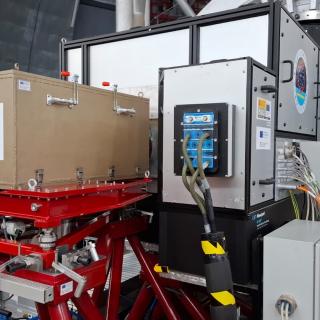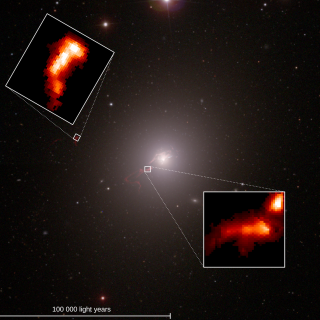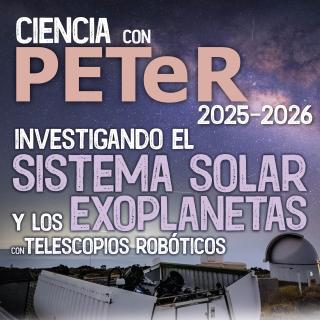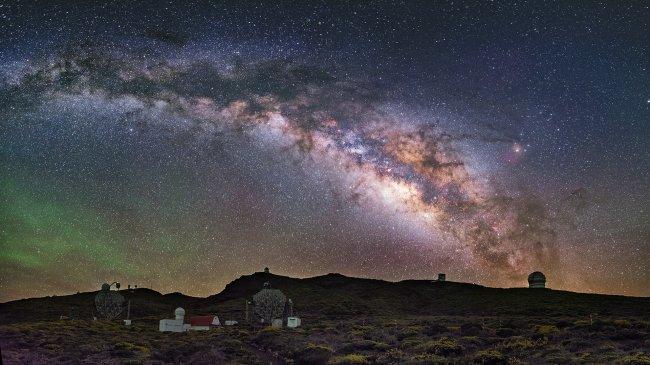It may interest you
-
 During October, the Adaptive Optics System team at the Gran Telescopio Canarias (GTCAO) of the Instituto de Astrofísica de Canarias (IAC), in collaboration with the technical team at the Gran Telescopio Canarias (GTC or Grantecan), successfully completed the integration of the GRANCAIN instrument into the world's largest optical-infrared telescope. The installation was carried out at the GTCAO outlet on the telescope's Nasmyth B platform, a key step in initiating performance testing of the new adaptive optics system. This is the first scientific instrument to operate using the GTC's adaptiveAdvertised on
During October, the Adaptive Optics System team at the Gran Telescopio Canarias (GTCAO) of the Instituto de Astrofísica de Canarias (IAC), in collaboration with the technical team at the Gran Telescopio Canarias (GTC or Grantecan), successfully completed the integration of the GRANCAIN instrument into the world's largest optical-infrared telescope. The installation was carried out at the GTCAO outlet on the telescope's Nasmyth B platform, a key step in initiating performance testing of the new adaptive optics system. This is the first scientific instrument to operate using the GTC's adaptiveAdvertised on -
 An international team of astronomers has captured the most detailed and completed view yet of the mysterious filaments surrounding the giant galaxy M87. Using new observations from the Gran Telescopio Canarias and the Canada-France-Hawaii Telescope, the study reveals how these long, thread-like structures move, evolve, and interact with their galactic environment and the activity of the central supermassive black hole. These findings have just been published in Monthly Notices of the Royal Astronomical Society. M87: a giant galaxy and its mysterious threads M87, located about 55 millionAdvertised on
An international team of astronomers has captured the most detailed and completed view yet of the mysterious filaments surrounding the giant galaxy M87. Using new observations from the Gran Telescopio Canarias and the Canada-France-Hawaii Telescope, the study reveals how these long, thread-like structures move, evolve, and interact with their galactic environment and the activity of the central supermassive black hole. These findings have just been published in Monthly Notices of the Royal Astronomical Society. M87: a giant galaxy and its mysterious threads M87, located about 55 millionAdvertised on -
 El Instituto de Astrofísica de Canarias (IAC) y el Área STEAM para el Fomento de las Vocaciones Científicas y la Creatividad de la Consejería de Educación, Formación Profesional, Actividad Física y Deportes del Gobierno de Canarias anuncian el lanzamiento de un ambicioso proyecto de innovación educativa, Ciencia con PETeR: Investigando el Sistema Solar y los exoplanetas con telescopios robóticos. Esta iniciativa, dirigida a centros de Educación Secundaria Obligatoria y Bachillerato del archipiélago, convertirá a las aulas canarias en auténticos centros de investigación astronómica durante elAdvertised on
El Instituto de Astrofísica de Canarias (IAC) y el Área STEAM para el Fomento de las Vocaciones Científicas y la Creatividad de la Consejería de Educación, Formación Profesional, Actividad Física y Deportes del Gobierno de Canarias anuncian el lanzamiento de un ambicioso proyecto de innovación educativa, Ciencia con PETeR: Investigando el Sistema Solar y los exoplanetas con telescopios robóticos. Esta iniciativa, dirigida a centros de Educación Secundaria Obligatoria y Bachillerato del archipiélago, convertirá a las aulas canarias en auténticos centros de investigación astronómica durante elAdvertised on
